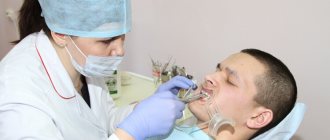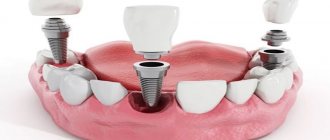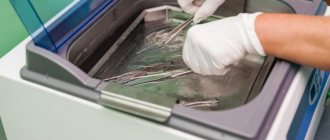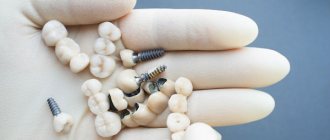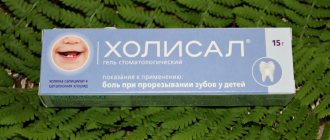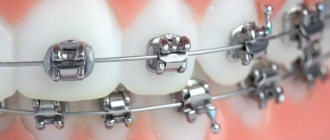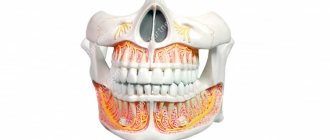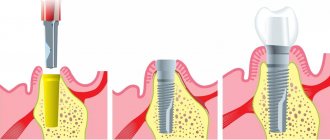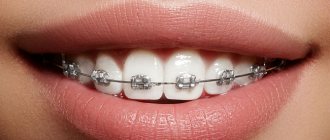Gnathologist in Moscow: when should you contact and why?
The human body is a complex of functionally and anatomically related systems: cardiovascular, digestive, nervous, etc. If a disturbance occurs in one of them, its result may affect the other. For example, with metabolic disorders, blood vessels, eyes and other organs suffer. Also in dental practice. Diseases of the temporomandibular joint (TMJ) can negate all the work of an orthodontist or orthopedist. To understand this relationship, you need to have a good understanding of the structure and functioning of the dental system and its effect on the body as a whole. A dentist-gnathologist has the appropriate knowledge and such a specialist is on the staff of the Trilogy clinic.
Dentists: what are they?
Dentistry is a fairly broad area of medicine, which is divided into several specific areas: therapy, surgery, orthopedics, orthodontics, periodontics and others. Depending on the chosen qualifications, skills and abilities, each doctor has his own area of responsibility and set of actions performed.
To understand which dentist to contact in various situations and what is the difference between an orthopedist and an orthodontist, a surgeon and a therapist, you should know the features of their activities.
Specialists often work together and closely interact with each other, because the patient may need a set of measures aimed at completely restoring the problem area of the oral cavity.
Dentist-therapist
It all usually starts with this dentist.
People come to him when they are worried about toothache or other symptoms associated with the maxillofacial area. He conducts diagnostics and an initial examination, establishes a diagnosis and prescribes treatment, and gives referrals to specialized specialists. His competence includes standard problems: caries, infectious diseases and inflammatory processes in the oral cavity. Dentist-therapist:
- cleans channels;
- removes nerves;
- installs seals;
- removes tartar and plaque;
- restores teeth;
- performs sanitation of the oral cavity before prosthetics or other dental procedures.
Dental surgeon
This doctor comes to the rescue if conventional treatments are ineffective and drastic solutions are needed that require surgical intervention.
Dental surgeon:
- removes teeth, tumors and cysts;
- eliminates acquired and congenital defects;
- opens foci of abscess and other inflammations;
- prepares the jaw for prosthetics and performs implantation;
- deals with restoration and plastic surgery of the jaw, as well as any other operations in the oral cavity.
Dentist-orthodontist
This doctor deals with dental disorders associated with malocclusion, which he corrects with the help of braces, mouthguards, plates and other devices. These can be genetic, congenital, age-related, acquired as a result of a disease or deformation anomaly:
- individual teeth;
- dental arches;
- jaws.
There are several other important specialties among dentists:
- Periodontist. Treats periodontal diseases, which is a complex of tissues surrounding the teeth and ensuring their fixation.
- Children's dentist. It differs from an adult dentist, since milk teeth, developing jaws and the child’s psyche have their own characteristics. This requires certain knowledge for proper treatment.
- Dental Technician. Engaged in the manufacture of dentures in dental laboratories.
But the main direction that makes it possible to restore teeth even in cases where other dentists are unable to help is dental orthopedics.
Gnathology – the science of the jaw
Muscles, ligaments, teeth, tongue, TMJ, and nerves are components of the dental system. How they work, what they influence, how they interact - gnathology deals with all these issues.
This section of dental science began to exist at the beginning of the last century. The first research in this industry started in 1924. By the beginning of the 60s of the same century, many more dentists began to study the components of dental harmony; various conferences were held on this topic, where participants shared their practical experience. Even an international academy of gnathology was organized. In 1964, a meeting for academic gnathologists was held for the first time. For the next 38 years, this event was repeated every year. There are still branches of the above-mentioned academy in many countries around the world today. In Russia there are scientists and practicing dentists who promote this science and are deeply convinced that the causes of diseases do not always lie on the surface, and in order to make a diagnosis and prescribe adequate treatment, it is necessary to dive deeply into the topic of cause-and-effect relationships between the structure of the human skeleton, its dental system and manifestations of various diseases.
Filling out contacts in your resume
Contact information is placed at the beginning of the resume, after the main information. In this section, you need to accurately indicate contact information - phone number and email address, as well as your area of residence or the nearest metro station.
Example of a “Contacts” block:
- Telephone:
+7 - Email:
- Skype:
ZubovMyresume
| Right | Wrong |
| [email protected] | [email protected] |
Gnathologist as a specialist with a huge amount of knowledge
Not all specialists in the dental industry can boast of gnathological knowledge. The jaw bones, teeth, masticatory and facial muscles and a number of other organs of the dental system are closely interconnected. Their condition affects breathing, ability to chew, and speak. If a person has problems chewing food, the cause is not necessarily just dental pathology. For example, he may have problems with the spine and posture. as a consequence, an altered position of the lower jaw, leading to increased tone of the masticatory muscles and pathological changes in the TMJ. That is why any work in the oral cavity should be carried out using gnathological knowledge.
In order not to harm the patient, to improve his condition, and not temporarily, but forever, it is necessary to determine the causes of dysfunction of the TMJ and eliminate them. The above-mentioned joint is one of the most complex in the human body. It provides movement of the lower jaw in various planes. How well it works affects the symmetry of the face, the beauty of the smile, a person’s mood, the quality of chewing and life in general. Our orthopedic gnathologist will restore the lost bite height, the physiological position of the TMJ and solve the dental problem comprehensively.
Specialist tasks
Unfortunately, no evidence of dental regeneration in humans has been established. The main task of orthopedic dentistry is to replace lost units with artificial products - prostheses of various types.
In addition to the main task of prosthetics, orthopedic dentists also perform other manipulations to treat and eliminate painful conditions of the oral cavity, namely:
- combating enamel erosion and cracks;
- elimination of caries;
- periodontal treatment, periodontal disease;
- treatment of pulpitis.
Orthopedists also deal with other problems of patients, namely:
- relieving the inflammatory process on the gums;
- elimination of painful sensations when chewing and biting;
- change (destruction) of the mineral composition of enamel;
- sensitivity to external stimuli (cold, heat, etc.);
- stopping the source of infection in areas of edema;
- deformation of the gums along the contour.
An orthopedic dentist solves not only aesthetic problems - restoration of a frontal smile through prosthetics, alignment of elements of the jaw row, but also restoration of chewing function, uniform distribution of loads.
The work of an orthopedic dentist is closely related to dental technicians. 50% of successful treatment depends on how the design is translated into a real product by a technician.
Without knowledge of technology and all the intricacies of materials science, it is impossible to perform quality work. During the treatment and prosthetic process, the technician receives adjustments from the orthopedist for the final installation of the systems.
The main cases in which you should consult a gnathologist
Restoration of dentition, installation of orthopedic structures, teeth straightening, and bite correction should occur under the supervision and after consultation of a gnathologist in Moscow. The latter will help determine the correct way to correct the patient’s current condition.
You should make an appointment with a gnathologist if:
- when opening and closing the mouth, the patient notes clicks;
- the patient often experiences jaw cramps, headaches and muscle pain;
- concerns about increased tooth wear;
- it is difficult to open your mouth fully;
- no one was able to determine the cause of the emerging toothaches;
- there are problems with the cervical spine.
Only the joint work of several specialists can lead to high results.
Section "Education"
First of all, higher education, qualifications, specialty, and the name of the university where it was received are indicated. Many employers are showing increased interest in graduates of certain educational institutions.
Basic education:
- Specialist:
St. Petersburg State Medical University named after. Academician I.P. Pavlova - Faculty:
Dentistry
- Speciality:
General dentist
- Year of ending:
2004
This block also includes additional courses, trainings, seminars and other educational events.
Medical institutions are interested in specialists who strive to continuously improve their professional skills.
Refresher courses:
- Year of ending:
2016 - Name:
Orthopedic dentistry, advanced training with certificate renewal
- Conducting organization:
NPC
- Year of ending:
2010
- Name:
Restorative planning, therapeutic dentistry
- Conducting organization:
Russian Medical Academy
For young specialists without work experience, it is advisable to describe in detail a successful industrial practice, diploma
. The employer must sense the potential in a young specialist.
Consultation with a gnathologist: how does it go?
An initial consultation with a specialist lasts an hour on average. This time is needed to carefully listen to all the patient’s complaints, of which there are usually many, and to examine the oral cavity, joints, and muscles. Problems with TMJ do not arise overnight, but are often the result of many years of pathological changes. It is very important to establish contact between the doctor and the patient; a properly built trusting relationship is an important aspect of successful treatment.
A treatment plan must be drawn up and agreed upon with related specialists, in particular an orthopedist and/or orthodontist. In addition to a visual examination of the patient, his dental system, and spine, instrumental diagnostic methods are prescribed. The patient is referred to:
- computed tomography involving the TMJ;
- condylography, to study the movement of the joint, the correct calculation of the angle of inclination of the planes of closure of the teeth;
- myography, for studying the masticatory muscles, etc.
A dentist-gnathologist in Moscow can use all of the above diagnostic methods or carry out 2-3 of the most “talking” ones for a suspected pathology.
Orthopedics in dentistry or who is an orthopedic dentist?
Orthopedics is a branch of dentistry that is responsible for restoring the integrity of the dentition. Today, this is the same popular area of dental treatment as therapy and surgery. After all, the absence of even one tooth not only disrupts the beauty of a smile. In the future, this can lead to diseases of still healthy teeth and pathological changes in the entire dentition.
An orthopedic dentist is a specialist whose competence includes the restoration of missing teeth through implantation and prosthetics. In this case, we can talk about either a complete absence of teeth and their roots, or single defects in a row. Below is a list of the main problems that the doctor deals with.
Diagnostics
Treatment of diseases of the maxillofacial area, caused by the complete or partial absence of one or more teeth, begins with determining the current condition of the oral cavity. For diagnosis, the dentist conducts a visual examination, interviews the patient and uses hardware methods (radiography, orthopantomogram, MRI). This allows the orthopedic dentist to:
- obtain a detailed clinical picture of the pathology;
- determine an adequate treatment method and draw up a treatment plan;
- predict the outcome of treatment as accurately as possible based on appearance and timing.
Treatment
Direct indications for orthopedic manipulation are disorders of chewing, speech or swallowing function, which are a consequence of existing dental defects. For this purpose, various methods of prosthetics and restoration are used, in which the tooth root is preserved. In this case, the tasks of the orthopedic dentist include:
- correct taking of impressions for crowns, core inlays, etc.;
- control of subsequent production of the necessary structures in the dental laboratory;
- high-quality installation of prostheses;
- monitoring the patient during the recovery period.
In addition, a specialist in this profile not only deals with prosthetics, but also takes part in the treatment of certain diseases of the oral cavity, which in the long term can lead to tooth loss (caries, pulpitis, erosion and cracks of enamel, periodontitis, periodontitis).
Consultations
An orthopedic dentist provides information support. As part of a preventive visit, he introduces you to the important steps of oral care that will help preserve your teeth. For patients who have already undergone prosthetics, the doctor explains the rules of use and helps them select special products for the care of structures that will help extend their service life.
Gnathology in Moscow: what treatment methods are used?
At the Trilogy clinic, specialists use the most advanced, effective and safe therapeutic methods. Our gnathologist in Moscow knows everything about the TMJ, its role in the body, therefore he takes a balanced and competent approach to the treatment of its dysfunction.
“Splint therapy” is one of the methods of treating jaw joint dysfunction. This method can be used before prosthetics. A “splint” is essentially a mouth guard that is placed on the teeth. The patient quickly gets used to it, and the treatment period with its help is quite short. There are several types of tires, for example:
- to relax muscles, relieve spasms;
- for the treatment of TMJ pathologies accompanied by clicking in the joint and pain;
- for the treatment of patients with combined pathology of muscles and joints.
Another treatment method used by a gnathologist is myogymnastics. The doctor offers the patient a set of exercises, sometimes in combination with massage, to ensure that the masticatory muscles work correctly.
What is the difference between a dentist: a surgeon, an orthodontist and an orthopedist?
Orthopedics is a huge branch of medicine, but it has nothing to do with dentistry.
The orthopedist’s task is to solve and treat problems of the musculoskeletal system. And such a specialty as an orthopedic dentist appeared relatively recently, and such a specialist is engaged in diagnosing, studying and treating any defects that are associated with the masticatory-speech apparatus. Today, dental services have developed rapidly, and are no longer limited to just treatment. Modern dentistry offers more and more specialized services every time. For this reason, there are several qualifications for dentists:
- dentist-therapist, whose duties include only treatment;
- a dental surgeon who already uses surgery to treat a tooth;
- orthopedic dentist who performs dental prosthetics or restoration;
- An orthodontist whose job is to correct bite defects.
People usually confuse orthopedists with orthodontists, but they are completely different specialties. Orthodontists correct malocclusion or crooked teeth, but an orthopedist performs prosthetics or, in other words, restores the external or internal part of the tooth. Patients come to an orthodontist for help only in the most extreme cases.
Orthopedic dentists most often undergo general practice, so sometimes they can even perform the work of a surgeon, because this part of dentistry is also related to prosthetics.
From this point on, you can describe the activities of this specialist in more detail. The duty of an orthopedist is to restore teeth and perform prosthetics. What is the difference between restoration and prosthetics?
At the moment, orthopedics in dentistry is a popular service. Thanks to it, not only the appearance of the teeth is restored, but also their functions. Under what circumstances do people seek the help of an orthopedist:
- Destruction. The tooth can be destroyed from caries and physical damage. In this case, it is given a beautiful appearance, and its functional side is also restored. Even molars can be restored, and this must be done as quickly as possible. After all, a person loses their chewing ability, which causes great inconvenience.
- Protection from destruction. It is not always possible to completely restore a tooth with the help of a prosthesis, because they are designed to restore a specific part. Usually, a crown is installed on part of the destroyed tooth, which prevents the tooth from decaying further. When the enamel has certain defects, the tooth can break at any moment, so with the help of a doctor this defect can be prevented.
- Correction of minor defects. Sometimes it happens that the teeth are completely healthy, but their appearance leaves much to be desired. And in such cases, the help of an orthopedist may be useful. Thin ceramic plates can hide some defects, such as chips, scratches and crevices.
The success of a beautiful smile depends entirely on an experienced prosthodontist. But before treatment, the doctor will definitely prescribe the necessary examination. It includes the following:
- Orthopantomogram.
- CT scan.
- Modeling using wax.
- Other highly specialized examination.
After this, the doctor will determine the real condition of the dental system. He then moves on to work on the prosthetic in his laboratory. After all, the main goal in the work of an orthopedist is to restore all the functions of a damaged tooth, and the main one is the chewing function.
Most often, an orthopedist uses special tabs in his work. Even today it is unclear what ceramic inlays can be classified as: dentures or fillings. The inlays must be made of durable material, mostly ceramic.
They are designed to close and protect root canals that greatly expand after caries or pulpitis. But, in addition, they restore the appearance of the tooth.
There is also such a thing as onlays; they differ in that they follow the curve of the tooth and acquire its color. Ceramic linings and inlays are durable and are not afraid of any food. To secure them, cement is used; it secures them well and does not harm the body.
Veneers are a thin plate of ceramic, before installing which the tooth is strongly ground down, and then it is set on dental cement. They are usually used for chips. Sometimes they are placed when the tooth becomes very yellow.
Using lumineers With the help of lumineers, you can correct minor tooth defects without harming the enamel. But, besides this, they are intended for those patients who cannot have veneers installed.
To install lumineers, a small hole is required, because they are only 0.3 mm thick. Lumineers are too thin and this is not only their advantage, but also a disadvantage. They cannot hide the entire defect.
An orthopedic dentist also deals with well-known prosthetics, which are crowns. Crowns are similar in appearance to teeth and are shaped like a cap. Crowns come from different materials: metal, ceramics or plastic, and their strength depends on this.
https://www..com/watch?v=A3zuZJv2IW0
The most expensive type of prosthetics are ceramic crowns. They are able to completely replicate not only the shape of the tooth, but also its color and naturalness.
Plastic crowns are rarely used in dentistry. They are usually used when the patient is waiting for a permanent crown to be made, but cannot walk with bare gums. In other words, such crowns are temporary.
Bridge prosthesis
If several teeth are missing in one row, then placing single ceramic crowns is expensive, so an implant is used. But the bridge is installed without this. A bridge is a structure that is similar to crowns, but only for several teeth at a time.
This helps restore the condition of not only damaged teeth, but also missing ones. Another advantage of such crowns is that doctors give them a lifetime guarantee.
Plate dentures. This type of prosthesis is removable and is used quite often. It is usually placed when all teeth are completely or partially lost. Most often, old people resort to such prosthetics, because they cannot afford another type of prosthetics. They are attached using suction cups or glue.
Clasp dentures
Such dentures are a system of fasteners, locks and clasps. The latter are fastenings for removable dentures, which grip the teeth from different sides. Such prostheses use metal, and this has a bad effect on appearance.
Naturally, an important job of an orthopedist is to completely restore lost or damaged teeth, which is why an orthopedic dentist now provides some of the most expensive services in dentistry. But such doctors are able to select material based on the client’s capabilities, and this is their advantage.
When choosing a prosthodontist, consider the following:
- A good specialist must have licenses and certificates of his qualifications.
- The doctor’s professionalism is confirmed by diplomas and certificates.
- During the consultation, you should look at the specialist’s office; usually all qualification documents are hung on the walls.
- A good doctor will definitely talk about the quality of all his services, and not about the number of procedures and their cost.
Constant control over the oral cavity can save a person from many problems with teeth and gums. Timely treatment and elimination of defects is carried out by an orthopedic dentist, with whose help you can forget about damaged teeth or their absence. It should be remembered: the fewer healthy teeth there are in the oral cavity, the more difficult it is to restore them and make prosthetics.
Source: https://piligrim-booking.ru/ortodont-ortoped-stomatologii-raznitsa/
Moscow gnathologists: generalists in dentistry
As a rule, dental clinics employ dentists who, in addition to treating TMJ dysfunction, also straighten teeth and correct bites. We are talking about an orthodontist-gnathologist. Both industries are very closely related, so it is logical that the same person is involved in this.
An orthopedic gnathologist does everything possible to ensure that the dental system works as it should, in order to avoid rapid wear of removable and non-removable structures necessary for partial or complete restoration of the dentition. Using a special device - an articulator - this specialist records the individual position of the upper jaw in space and the position of the lower jaw in relation to the upper jaw, and sets the parameters of articular guidance. The manufactured orthopedic design, taking into account these parameters, will ideally suit the patient and serve him for the maximum possible time.
Who is an orthopedic dentist and what does he treat?
Dentistry, like any other field of medicine, includes many specialist doctors. The basic direction is therapy.
The first examination begins with the therapist, who conducts an initial examination and determines the cause of the patient’s complaints.
If problems in the oral cavity go beyond the boundaries of ordinary caries, stomatitis or other inflammatory processes, the doctor, in addition to treatment, issues a referral to the appropriate specialized doctor.
- Specialization
- Orthopedics as a field of medicine
- Symptoms
- Who is an orthopedic dentist and what does he treat?
- Restores chewing function
- Saves teeth
- Treats edentia
- What does an orthopedic dentist do?
- Installation of fixed dentures
- Metal-ceramic crowns
- Zirconium dioxide crowns
- Solid ceramic crowns
- Installation of removable dentures
- Implantation
- An integrated approach to treatment
Specialization
Surgeons perform surgical interventions, the orthodontist restores the correct bite using braces and removable or fixed plates, and periodontist treats inflammatory processes in the gums.
An orthopedic dentist is responsible for prosthetics and restoration of the dentition.
Important: All highly specialized doctors work together, since any restoration of the oral cavity requires an integrated approach and comprehensive treatment.
Orthopedics as a field of medicine
Orthopedics treats diseases of the musculoskeletal system in general. Orthopedists restore spinal curvatures and treat flat feet. An orthopedic dentist eliminates disorders and restores the chewing-speech apparatus. With the help of prosthetics, the doctor restores the integrity of the jaw, which allows a person to chew food normally and communicate with others.
Symptoms
You should consult an orthopedic dentist if:
- absence (loss or removal) of one or more teeth;
- partial or complete destruction of the dental walls;
- mobility or increased sensitivity of teeth;
- diseases of the gums or bones, for example, periodontal disease, periodontitis;
- cosmetic defects in appearance: different size, irregular shape, enamel pigmentation, any other violations in terms of aesthetics;
- detection of temporomandibular joint disease (TMJ);
- recommendations from a therapist or other specialized specialist who issued such a referral after an examination.
Who is an orthopedic dentist and what does he treat?
This specialist specializes in dental restoration. He is often confused with an orthodontist, however, there is a big difference between these doctors. An orthodontist straightens crooked teeth and corrects problematic bites using braces and removable plates. An orthopedist partially or completely restores teeth using dentures. He is often called a prosthetist.
An orthopedic dentist or prosthetist eliminates many problems, which makes the patients’ lives comfortable and of high quality:
Improves quality of life and restores psychological comfort.
Due to the absence of one or more teeth, the patient loses self-confidence and feels constant discomfort when communicating with others.
Please note : Psychological complexes and stress can also cause pronounced defects in the dentition, for example, large gaps or chips. The person stops smiling widely, speaking openly and constantly controlling the position of his lips. Such tension can provoke the development of side diseases of the nervous system.
Restores chewing function
Chewing food thoroughly is the key to a healthy digestive system.
Chewing dysfunction disrupts the functioning of the entire dental system, reduces muscle tone and slows down blood circulation in soft and bone tissues.
The faster the doctor eliminates the problem, the faster the patient’s general condition will improve. If the situation is neglected, an inflammatory process may develop, which will lead to periodontitis or periodontal disease.
Saves teeth
Let's imagine a situation: a patient came with dental tissue almost destroyed to the ground, which makes it impossible to install a filling, but the roots remained healthy. Common causes are advanced caries or an injury. You can try to stop the destruction process by preserving the roots and nerve endings. An orthopedic dentist also deals with such cases.
Treats edentia
Patients who are missing all their teeth also turn to an orthopedist. He makes removable or fixed dentures and places implants that replace natural teeth. This is not just an opportunity to chew, but a complete return of communication skills and a comfortable stay among others.
The medical practice of the orthopedic office includes:
- restoration of tooth enamel and bone tissue while preserving its own root and nerve canals;
- installing a protective crown on a decaying tooth to stop further shedding and delamination of tissue;
- production and installation of prostheses;
- elimination of aesthetic defects in the dentition, such as cracks, chips, irregularities, pigmentation.
Medical protocols are clearly defined, so orthopedic dentists in qualified clinics always follow established rules and treatment regimens. This allows you to avoid negative consequences and dangerous side effects.
What does an orthopedic dentist do?
The area of competence of a prosthetist includes:
Installation of fixed dentures
Such structures include crowns, inlays, and veneers. These designs are securely fixed and are worn constantly.
Metal-ceramic crowns
The most common type of fixed dentures. At the base there is a cap made of an alloy of cobalt, chromium and titanium, which is coated with a ceramic composition. This design imitates healthy teeth, lasts from 5 to 10 years and is quite affordable. Safety depends on the presence of impurities in the material, which can cause oxidation and inflammation of the gums.
Zirconium dioxide crowns
One of the most advanced techniques. The cap, shaped like a tooth, is made of zirconium dioxide, which is covered with ceramic on top.
This material does not cause allergic or oxidative reactions. It does not interact in any way with the soft tissues of the gums.
When making prosthetics, computer modeling is used, which creates a crown of the most accurate shape and size.
The number of possible shades is much greater compared to conventional metal ceramics, so the artificial tooth will not stand out among the natural dentition.
Solid ceramic crowns
There is no metal in such designs, which allows you to fully convey all the shades of the tooth. These crowns are placed on the front teeth.
Installation of removable dentures
Clasp prosthetics are suitable for cases where it is impossible to install fixed structures, and the patient does not have money for implantation. It is an arch with two supports that hold artificial teeth. The orthopedist fixes it to the upper jaw.
The undoubted advantages of clasp dentures are low prices and the absence of surgical intervention. There are quite a few disadvantages. Firstly, it takes a long time to get used to the prosthesis.
Secondly, it must be removed and cleaned daily. Thirdly, the jaw does not receive full load when chewing food, the blood supply deteriorates and the bone gradually sags.
Therefore, removable dentures need to be changed quite often.
Implantation
This is the method that doctors recommend to all patients who have lost one or more teeth. Implants not only maintain a beautiful appearance, but also contribute to the health of the patient.
Regardless of the chosen method of prosthetics, all installed structures must be:
- made taking into account the individual characteristics of the patient;
- designed for long term use;
- safe for health and solve aesthetic problems.
An integrated approach to treatment
Let us once again emphasize the important connection between the orthopedist and other specialized doctors. First, the therapist carries out sanitation of the oral cavity, removes plaque and stones, and treats inflammatory processes of the gums and oral mucosa.
Surgeons remove root teeth that are no longer subject to therapeutic treatment and implant an implant into the patient’s jaw for further manipulation by an orthopedist.
The orthopedic dentist works closely with dental technicians who are responsible for making dentures in the laboratory.
Source: https://orbital-dent.ru/blog/stomatolog-ortoped/
Gnathologist in Moscow: prices
The financial issue is sometimes the determining factor when choosing a clinic and/or doctor. You can familiarize yourself with specific figures and official price lists both on the website and at the consultation. The Coordinator will tell you in detail about the pricing policy of our center during a personal meeting.
The cost of treatment by a gnathologist depends on parameters such as:
- severity of pathology;
- complexity of diagnosis, research methods used;
- duration and method of treatment.
The price is not affected by which specialist at the Trilogy medical and dental center will deal with the problem of dysfunction of the TMJ and other components of the dental system. Our dentists know their business equally well and will definitely try to help you.
Gnathologist: how to find one in Moscow?
There are few such dentists even in the capital. However, in our center, all specialists adhere to the concept of an integrated approach to solving dental problems. That is why they are for the active use of their gnathological knowledge in every clinical case. Our orthodontist-gnathologist in Moscow will identify the true cause of tooth curvature, bite pathology, and will find relationships with other changes in the body of an adult and/or child. And the orthopedic gnathologist at the Trilogy center will never begin treatment without a preliminary examination of the TMJ function, a thorough history taking and a thoughtful approach.
The reception is held at the address: Moscow, Novopeschanaya street, 16, building 2. You can make an appointment simply by calling or writing to us in instant messengers.
Please note: we work with both children and adults. The gnathologist’s appointment is painless, the patient does not experience any psychological or physical discomfort. It is important to us that you not only receive a medical service, but are also satisfied with the result, the work of the doctor and the clinic as a whole.

